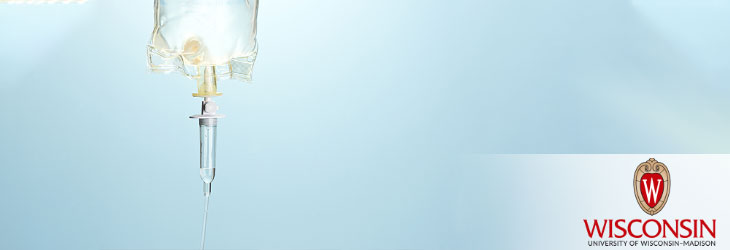Drug Delivery

Reagents for Bioreversible Protein Esterification
WARF: P150262US03
Inventors: Ronald Raines, Kalie Mix
The Wisconsin Alumni Research Foundation (WARF) is seeking commercial partners interested in developing a potentially best-in-class diazo compound for esterification of biological molecules.
Overview
Chemoselective transformations are of key importance in modern chemical biology. Protein esterification can, for example, be employed for labeling, enhanced cellular uptake and other useful protein modifications. For this reason methods and reagents for selective esterification of carboxyl groups in proteins/polypeptides are of particular interest, especially if the reactions can be carried out in buffered aqueous solution and do not require a catalyst.
While there has been some success in this space, there remains a need for more efficient chemoselective esterification reagents for proteins and other biological molecules (e.g., nucleic acids) that result in high-yield, bioreversible ester formation. Such reagents should be synthetically amenable to modification with biologically useful entities.
While there has been some success in this space, there remains a need for more efficient chemoselective esterification reagents for proteins and other biological molecules (e.g., nucleic acids) that result in high-yield, bioreversible ester formation. Such reagents should be synthetically amenable to modification with biologically useful entities.
The Invention
UW–Madison researchers have developed an optimized diazo compound, derived from phenylglycine amide, for converting carboxylate groups into an ester in high yield in buffered water. The ensuing esters are labile to esterase enzymes such as reside in all human cells, making the modification bioreversible. The novel compound is small, avoids deleterious side reactions and has a modularity that enables broad utility.
Applications
- Reagent market
- Potential biomedical utility; promoting cellular uptake of cargo molecules
Key Benefits
- Provides high esterification rates and yields
- Bioreversible
- Compound is novel, small and modular.
- Broad utility
Stage of Development
The novel compound (R1(R2)C=N=N) is markedly superior to other reagents in esterifying a model protein in a bioreversible manner. The R’ group may be virtually any moiety, including ones that promote cellular uptake, cancer-cell targeting and enhanced pharmacokinetics (e.g., PEG). All of these moieties would be removed from the protein by cellular esterases.
Additional Information
Related Technologies
Related Intellectual Property
Tech Fields
For current licensing status, please contact Jennifer Gottwald at [javascript protected email address] or 608-960-9854